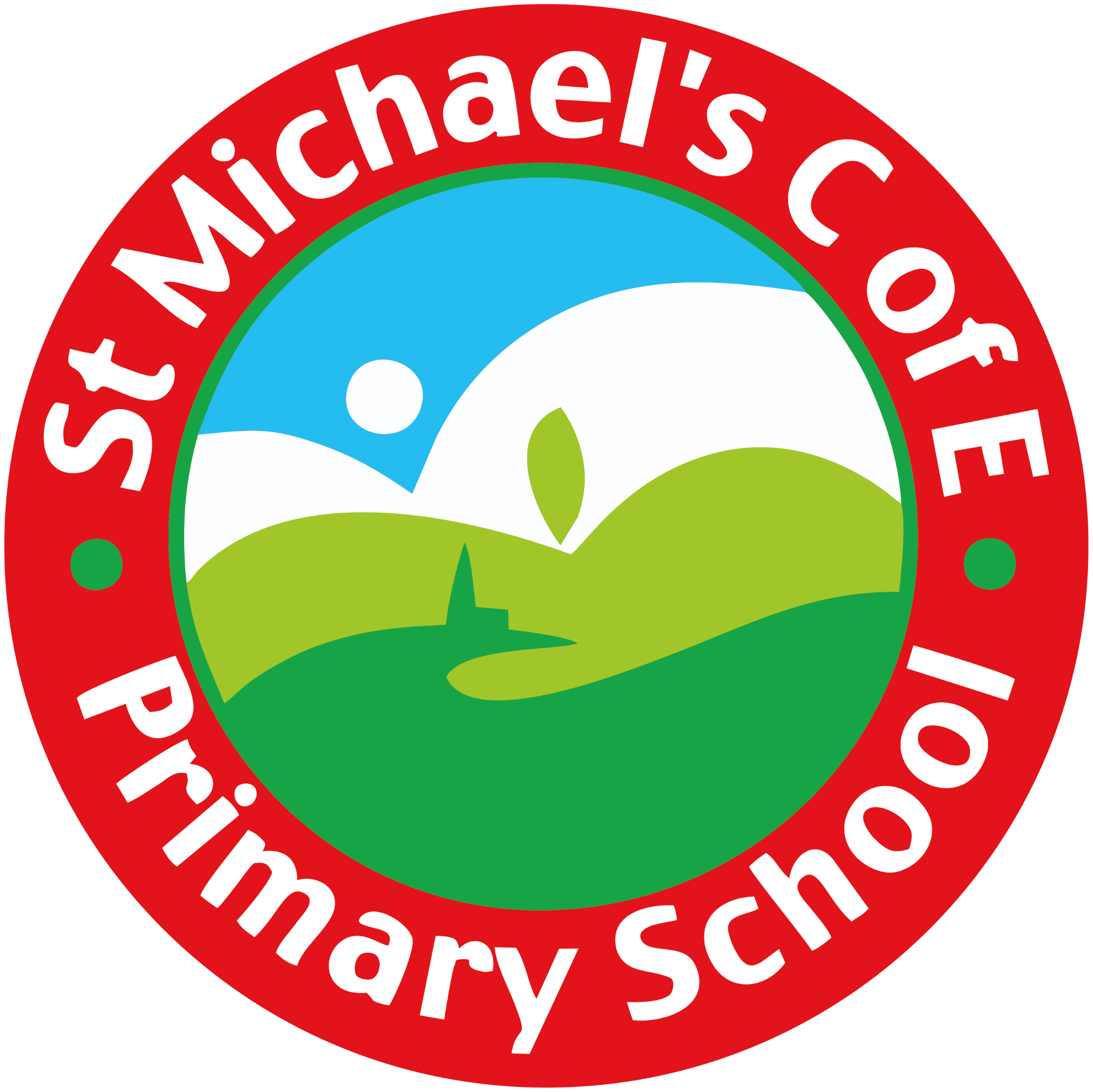
St Michael's C of E Primary School
Writing
Writing
Writing in St Michael’s Primary school is led by an immersion in high quality texts. This begins in reception with the oral retelling of stories, poems and traditional tales, including through ‘helicopter stories’ to support understanding of word meaning. Story mapping is a skill which begins in reception and is used to support learning throughout a child’s time in primary school.
Key stage 1 use visual success criteria, which is progressive, to aid differentiated and adapted learning opportunities. Key stage 2 classes use success criteria in a tick-list to support self and peer assessment.
The writing sequence is followed throughout the school and the majority of writing is linked to a quality text, picture book, film clip or an overarching theme. The sequence may last between two-four weeks (usually 3 weeks) and follows 3 phases: immersion, grammar and application, planning, writing and editing.
Phase 1
Children are immersed within a text or film clip. Here they explore back ground knowledge and vocabulary. They can begin to look at exploring character viewpoint, text features, structures and orally re-telling and recounting.
Phase 2
Children learn new grammar based of the features of the text type. They use short burst writing opportunities to apply these newly taught skills within a context. Children are able to reflect on their own writing, the writing of their peers and examples from authors.
Phase 3
Within this phase, children plan, orally rehearse, re-cap structure, features and success criteria before independently writing, editing and revising.
Throughout the phases, teachers may use WAGOLLS (examples of what a good one looks like) to support children who struggle at times. These examples highlight genre-specific criteria that children have been exposed to across each phase of learning.
Genre-specific criteria and examples are generated and collaboratively added to our class working walls to support the children in lessons.
Writing is celebrated on the year group working walls, through corridor displays, in assembly, through Head teacher rewards and through a termly ‘Awesome Author Award’.
Spelling
Spelling is taught through our validated phonics scheme (Unlocking Letters and Sounds) in Key stage 1. This aligns and is included within the phonics progression. See our phonics page to view the progression document. In Key Stage 2, the teaching of spelling is supported by the Spell Shed Spelling scheme. Spelling rules are taught each week and practise opportunities through additional activities are provided for. Children are given spelling lists to revise at home and teachers monitor engagement in this area regularly.
Extra and regular intervention of phonics/key words is undertaken by our teaching assistants, and may be structured as 1:1 or small group support. Nessy is used to support children who find spelling challenging as a regular intervention and is monitored regularly.
Handwriting
In the Early Years, children learn to print letters following the Unlocking Letters and Sounds guidance. As children progress, they are explicitly taught how to form letters using pre-cursive and then cursive style. While most children are able to write consistently in this way, others may find this difficult and are supported to write fluently using print.